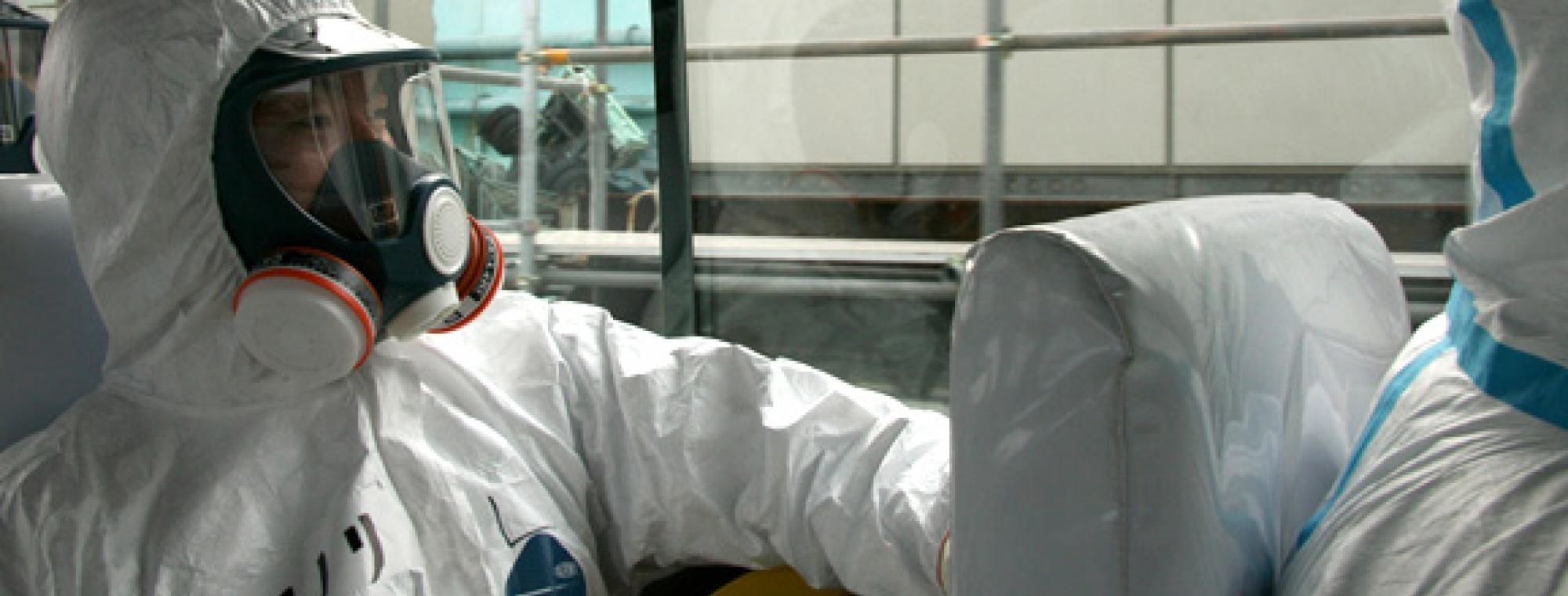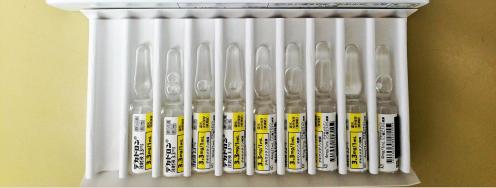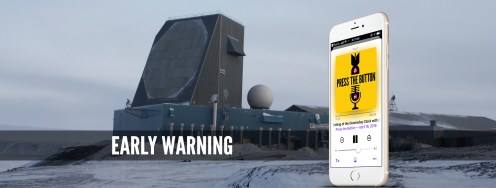Next week marks the second anniversary of the nuclear accident at the Fukushima reactors in Japan. Remember? The days and weeks we collectively crossed our fingers as heroic workers improvised and threw everything they could at melting reactors and damaged spent fuel pools to stave off disaster? Seems like a long time gone and Fukushima has, in our collective consciousness, faded into a historical nuclear footnote. “Close call,” we may think, “but the danger is over.”
Not quite. In fact, not even close.
Today, those reactors and spent fuel pools at the Fukushima site continue to pose serious threats to human health and the environment. The situation is little changed from two years ago: the reactor cores that melted are still too “hot” to get near. Seriously damaged spent fuel pools that contain some of the most lethal radioactive materials known continue to demand constant cooling and monitoring until authorities can puzzle out how this radioactive waste can be stabilized. In short, the mess caused by the tsunami remains and the hazards it presents have no easy or quick solution. The only thing that has really changed is Fukushima has fallen out of the news cycle.
The damage and risks from Fukushima are significant and complex. Current plans estimate costs north of $100 billion to clean up the mess and will take years at the least but more likely decades to complete. Let that sink in a bit – decades.
But Fukushima is only the most recent and stark instance of a more pervasive yet under-appreciated fact: every nuclear reactor, reprocessing facility, waste site and materials handling location represents health and safety risks that will last literally for millennia. The dangers we created since the dawn of the Nuclear Age have no known solution, and unlike biodegradable packaging, won’t go away anytime soon.
For reference, the relatively minor 1979 meltdown in a reactor at the Three Mile Island site in Pennsylvania wasn’t able to be safely accessed until 11 years after the accident; and official cleanup ended two years after that. Moviegoers were watching “The China Syndrome” while the real-life plot unfolded near Harrisburg, PA. Cleanup didn’t officially end until theaters were showing “Schindler’s List.” Likewise, the much more serious explosion and nuclear fire at the Soviet Chernobyl plant – which occurred in 1986 in Ukraine – continues to have an exclusion zone around it where people are forbidden to live. When can they again? No plans on that front.
Surely with Three Mile Island behind us, the U.S. is past its nuclear worries, right? Not so. Last month, it was discovered that several underground tanks that store some of the most intensely radioactive stuff on the planet, liquid high-level waste from reprocessing nuclear materials, were leaking at the Hanford site in eastern Washington State. The wastes in those tanks came from U.S. nuclear weapons production from the 1950s to about the 1970s. That liquid waste will pose a lethal threat for longer than modern humans have been around – tens of thousands of years. That’s why the plans for disposal of U.S. nuclear waste at the Yucca Mountain site in Nevada included working with anthropologists to design ways to communicate the danger to future generations whose language we might not know.
In February, a spectacular meteor explosion occurred in the Chelyabinsk region of Russia. It was notable not only for its size and destruction, but also the vivid imagery captured by many Russian video cameras. What was overlooked was the proximity to some of Russia’s large nuclear sites. The meteor exploded less than 60 miles from the Mayak site – Russia’s Hanford – where similar wastes and materials are stored. Can you imagine if, at roughly 30,000 miles per hour, the explosion happened just a few seconds later, right over the Mayak site?
The common connection to all of these cases is simple: nuclear hazards have interminable durations. The “half-lives” of many of the radionuclides comprising our nuclear production line – a measure of time when half of the radioactive potency decays – are in the tens of thousands of years. Even the shorter-lived constituents that are more dangerous but less durable don’t decay for decades. A rule of thumb is that danger from radioactive materials become “safe” after about ten half-lives pass. That means even the “hottest” stuff is bad news for hundreds of years, and the rest will be troublesome for about 100,000 years. These materials and their waste are fundamentally different than all other industrial processes humankind undertakes. The forces we unlock remain potent for far longer than even our own human experience. The environmental movement is fond of quoting the Iroquois concept that decisions made should consider the impact on the “seventh generation” beyond when choices are made. That is a great idea. But the fact is that nuclear materials we have made, wastes we have created and the risks they pose, will threaten the 700th generation and beyond.
While Fukushima may seem behind us, it is not. While Chernobyl and Three Mile Island may strike us as answers to trivia questions, they are not. Skeptics may say that these events were “Black Swans” and show the rarity with which nuclear accidents occur. Even so, low probability events over such a long time span means that it is not “if” the next Chernobyl or Fukushima will happen, but “when” – and how bad. With some 440 nuclear power plants on Earth, scores of nuclear materials processing plants for weapons production, waste tanks and storage areas that were never designed to last more than a few years, and dozens of nuclear reactors at sea on Navy vessels, the inconvenient truth is that we have many ticking time bombs of nuclear risk.
Today the United States is contemplating spending hundreds of billions of dollars to maintain and extend the lives of nuclear bombs, build and new generation of nuclear-powered missile submarines, replace facilities that process nuclear materials for weapons and produce a blend of new nuclear fuel that would comprise uranium and weapons-plutonium. Meanwhile, China and other Asian nations are poised to greatly expand the number of nuclear power plants over the next decades. The debates we have about these decisions must be transparent and democratic. But they also must include a serious recognition that whatever our near-term considerations for security and energy may be, we must look beyond them and think in much longer time-frames than typical.
Nuclear is different. As we remember Fukushima two years out, we are obligated to ground the decisions we make today about nuclear policy in the context of two hundred thousand years out.





